Chevrolet Tahoe Vs Chevrolet Suburban: Which Full-size Chevy is Right for You?
If you are shopping for a full-sized sport utility vehicle, the odds are that the Chevrolet Tahoe and Chevrolet Suburban are both on your shortlist.
The Suburban is one of the oldest vehicle nameplates in the industry, having been a part of the Chevrolet lineup since 1935. Chevy introduced the Tahoe in the early 1990s as a replacement to the Blazer and as a slightly smaller version of the Suburban.
Both the Tahoe and Suburban have withstood the test of time, continuing uninterrupted for decades while just about every other body-on-frame SUV was laid to rest. These two large Chevrolet SUVs have spent many years being the most popular full-size SUVs because there was simply no competition and while there are some models from other automakers that challenge these two, the Tahoe and Suburban are arguably the best full-sizers ever.
Get a Quote on a New Chevrolet Tahoe or SuburbanIf you are shopping for a new large SUV and you aren’t sure whether the Chevrolet Tahoe or Chevrolet Suburban would better fit your needs, we have you covered. Below, we look at all of the key features of these two, highlighting which big Chevy has the advantage in each area.
Cabin Space
The Chevrolet Suburban is 15 inches longer than the Chevrolet Tahoe, with 13.2 of those inches being between the axles, but that doesn’t lead to many changes in passenger seating space.
Tahoe: The Tahoe offers 42.3 inches of front-row headroom, 44.50 inches of front-row legroom, and 66 inches of front-row shoulder room. In the second row, the Tahoe features 38.9 inches of headroom, 42 inches of legroom, and 64.8 inches of shoulder room. The third row offers 38.2 inches of headroom, 34.9 inches of legroom, and 62.7 inches of shoulder room.
Suburban: The Suburban offers the exact same measurements for the first and second row as the Tahoe. Up front, this includes 42.3 inches of headroom, 44.50 inches of legroom, and 66 inches of shoulder room. In the second row, the Suburban offers the same 38.9 inches of headroom, 42 inches of legroom, and 64.8 inches of shoulder room as the Tahoe. When you get into the third-row seating area, you see the first space advantages for the Suburban. The Suburban offers the same 38.2 inches of headroom, but the Suburban has an advantage in third-row legroom with 36.7 inches and shoulder room with 62.8 inches.
Bottom Line: You don’t gain any passenger space with the added length of the Chevrolet Suburban for the driver, front- or second-row passengers, but you do gain a few inches of legroom for the third-row passengers. If having more passenger space in the third row, the Suburban is the easy winner, but if you don’t plan to use that rear-most row, the two are practically identical.
Cargo and Towing
Tahoe: As for the Tahoe, if you have people in the second row, folding the third row down will lead to 72.6 cu-ft of cargo space and If you are relying purely on the area behind the third row of seats, this smaller SUV has 25.5 cu-ft of cargo space.
In terms of payload capacity, the Tahoe’s weight advantage leads to a payload capacity advantage compared to Suburban models with similar drivetrain components. All Chevrolet Tahoe models with a gasoline engine, including both the 5.3 and 6.2-liter mills with either rear- or four-wheel-drive, are rated to haul 1,834 pounds. As for the diesel models, rear-drive Tahoes with the 3.0-liter diesel can carry 1,655 lb while the four-wheel-drive models will haul up to 1,753 lb.
SEE ALSO: 2021 Chevrolet Tahoe First Drive Review: Raising the StandardThe Chevrolet Tahoe with the 5.3-liter V8 and rear-wheel-drive is capable of towing up to 8,400 lb while four-wheel-drive models with that same engine will tow 8,200 lb. The Tahoe High Country models with the 6.2-liter gasoline V8 can tow 8,300 lb in rear-drive form while four-wheel-drive models can pull 8,100 lb. Rear-drive Tahoes with the 3.0-liter diesel engine can tow 8,200 lb and four-wheel-drive diesel models will tow 8,000 lb.
Suburban: The added length gives the Suburban a significant advantage and cargo-hauling ability in every seating configuration. With the second-and third-row seats folded down, the Suburban offers 144.7 cu-ft of cargo space. With the third row folded down, the Suburban offers 94.8 cu-ft and just behind the third row, the larger Chevy SUV has 41.5 cu-ft of cargo space.
The rear-drive Suburban with the 5.3-liter V8 can haul 1,750 lb while that same engine with four-wheel-drive can carry 1,759 lb. The Suburban High Country with the 6.2-liter V8, whether rear- or four-wheel-drive, can haul 1,612 lb. The Suburban with the 3.0-liter diesel can haul between 1,684 and 1,703 lb in rear-drive form while the diesel four-wheel-drive models can haul between 1,876 and 1,884, depending on the trim level.
The rear-drive Chevrolet Suburban with the 5.3-liter V8 can tow 8,300 lb and four-wheel-drive models with the base V8 can tow 8,100 lb. The rear-drive High Country with the 6.2 will pull 8,200 lb while the 4×4 version will tow up to 7,900 pounds. Suburban diesel models with rear-drive can pull 8,000 lb and four-wheel-drive diesel models can tow 7,800 lb.
Bottom Line: The Suburban offers a considerable advantage in cargo space capacity, but the Tahoe offers an advantage in payload capacity and towing capacity. If you are looking to haul lots of boxes or other lighter cargo, the Suburban is the better choice, but if you are looking to carry more weight inside and tow some, the Tahoe is the stronger option.
Technology and Features
The Chevrolet Tahoe and Suburban are two of the biggest vehicles available in the North American market, making lots of room for premium amenities. As is the case in many other comparisons between these two, the standard and optional features are identical across the trim levels.
Tahoe: The Chevrolet Tahoe LS comes with cloth upholstery, featuring 8-way power-adjustable front seats, manual 60/40 split-folding second-row bench, and manual 60/40 split-folding third-row bench seats. The Tahoe LT and RST each feature 10-way front power-adjustable seats with leather upholstery in LT and perforated leather in the RST trim. The front seats in LT and RST models are heated, heated outboard seats in the second row though, are optional. When you step up to the Premium and High Country models of the Chevy Tahoe, you get premium perforated leather upholstery with 12-way power-adjustable front seats that are both heated and cooled. The outboard positions of the second row are also heated and a leather-wrapped steering wheel is standard in all trim levels.
In terms of interior technology, the Tahoe LS comes standard with the Chevrolet Infotainment 3 Plus system with a 10.2-inch diagonal HD color touch-screen, featuring Bluetooth connectivity, Wireless Apple CarPlay/Wireless Android Auto capability for compatible phones, steering-wheel-mounted controls, and a SiriusXM with 360L trial subscription. This infotainment system is standard on all Tahoe models. The LS models also come with a 4.2-inch diagonal color driver information center screen, 4G LTE Wifi hotspot capabilities, a 6-speaker audio system, Chevrolet Connected Access, Cruise control, Keyless Open, Keyless Start, power windows with express controls, remote start, tri-zone automatic climate control, and front and rear USB ports.
Those customers who opt for the Tahoe LT or RST will enjoy a Bose 9-speaker audio system in addition to all of the standard gadgets of the LS package. When you step up to the Premier, you get an eight-inch diagonal multi-color Driver Information Center, a Bose 10-speaker Surround with CenterPoint audio system, navigation, and the option to add a 15″ diagonal multi-color Head-Up Display system and the Rear Camera Mirror system. The High Country comes with the standard features of the Tahoe Premier, but the Head-Up Display and Rear Camera Mirror system are both standard in the range-topping model.
Suburban: The Chevrolet Suburban LS comes with cloth seats from front to rear, featuring 8-way power-adjustable front seats, manual 60/40 split-folding second-row bench seats, and manual 60/40 split-folding third-row bench seats. The Suburban LT and RST each feature leather-wrapped 10-way front power-adjustable seats within LT models and premium perforated leather in RST models. The front seats in LT and RST models are heated, as are optional heated outboard seats in the second row. The Suburban Premier and High Country models benefit from perforated leather upholstery with 12-way power-adjustable front seats that are both heated and cooled. The outboard positions of the second row are also heated and a leather-wrapped steering wheel is standard in all trim levels.
Just like the Tahoe, the Suburban has an almost identical trim breakup. The LS trim gets the same Chevrolet Infotainment 3Plus with the 10.2-inch screen with identical features and is standard on all Suburban models. The LS models also come with a 4.2-inch diagonal color Driver Information Center screen, 4G LTE Wifi hotspot capabilities, a 6-speaker audio system, Chevrolet Connected Access, Cruise control, Keyless Open, Keyless Start, power windows with express controls, remote start, tri-zone automatic climate control, and front and rear USB ports, just like the Tahoe.
SEE ALSO: Chevrolet Colorado vs Toyota Tacoma: Which Mid-Size Truck is Right For You?The Suburban LT or RST comes with a Bose 9-speaker audio system in addition to all of the standard gadgets of the LS package. The Premier trim fetches you an eight-inch diagonal multi-color Driver Information Center, a Bose 10-speaker Surround with CenterPoint audio system, navigation, and the option to add a 15″ diagonal multi-color Head-Up Display system and the Rear Camera Mirror system. The top-of-the-line High Country trim comes with the standard features of the Premier models and adds Head-Up Display and Rear Camera Mirror system to the mix.
Bottom Line: The Chevrolet Tahoe and Chevrolet Suburban come with the exact same interior features and options across the trim levels. From the seating material to the infotainment system to the sound system, these two big SUVs share all of the same components. The only difference is that with the interior size difference of the two, you might prefer the audio quality of the Bose speaker system in one of the big Chevy SUVs over the other.
Powertrain
The Chevrolet Tahoe and Chevrolet Suburban are powered by the same engines across each of the shared trim levels.
Tahoe: The rear-drive Tahoe is offered in LS, LT, RST, Premier, and High Country trim, all of which are also available with four-wheel-drive. The Z71 trim however, is available with 4WD only. The 5.3 -liter V8 is standard on the LS, LT, RST and Premier trims. You can also upgrade to a 3.0-liter Duramax diesel as well. The 5.3-liter V8 offers 355 horsepower and 383 lb-ft of torque while the diesel packs 277 horsepower and 460 lb-ft of torque.
In the Tahoe High Country, the 3.0-liter Duramax diesel is the standard engine while the 6.2-liter V8 with 420 horsepower and 460 lb-ft of torque is optional.
The 10-speed automatic is standard with all engines as it is in the Suburban. Also, it is the only transmission offered for the 2021 Tahoe. An Autotrac single-speed transfer case is standard on four-wheel-drive LS, LT and RST models while the Z71, Premier and High Country versions of the Tahoe feature an Autotrac two-speed transfer case.
Suburban: For the rear-drive Suburban, trim levels include LS, LT, RST, Premier, and High Country, all of which are available with four-wheel-drive, but 4WD buyers can also pick the Z71 model. The Suburban in LS, LT, RST, and Premier trims come standard with the 5.3-liter gasoline V8 or the optional 3.0-liter Duramax diesel. The 5.3-liter V8 offers 355 horsepower and 383 lb-ft of torque while the diesel packs 277 horsepower and 460 lb-ft of torque.
In the Suburban High Country, the 3.0-liter Duramax diesel is the standard engine while the 6.2-liter V8 with 420 horsepower and 460 lb-ft of torque is optional.
The 10-speed automatic is standard with all engines and it is the only transmission offered for the 2021 Suburban. An Autotrac single-speed transfer case is standard on four-wheel-drive LS, LT, and RST models while the Z71, Premier, and High Country versions of the Suburban feature an Autotrac two-speed transfer case.
Bottom Line: Based on the numbers above, there is no mechanical difference between the Chevrolet Tahoe and the Chevrolet Suburban, but there is one is point to consider. Due to the smaller stature, the Tahoe weighs between 140 and 180 pounds less than the comparable Suburban. As a result, the Tahoe feels a bit quicker since you using the same amount of power to use a little less weight.
Fuel Economy
While the Tahoe is slightly shorter and lighter than the Suburban, the weight difference doesn’t help with fuel economy ratings. The two big Chevy SUVs have identical fuel economy ratings across every time level and engine option.
Tahoe: The rear-wheel-drive Chevrolet Tahoe models with the 5.3-liter gasoline V8 are rated at 16 mpg city and 20 highway while High Country models with the 6.2-liter gasoline V8 are expected to return 15 mpg around town and 19 mpg on the highway. The four-wheel-drive Tahoe models with the 5.3-liter V8 are rated at 15 city and 19 highway while the 6.2-liter-powered High Country models with 4WD are rated at 14 city and 19 highway.
All Chevrolet Tahoe models with the 3.0-liter Duramax diesel, including rear- or four-wheel-drive, are rated at 22 mpg around town and 25 on the highway.
Suburban: The rear-wheel-drive Suburban models with the 5.3-liter gasoline V8 are also rated at 16 mpg around town and 20 on the highway while High Country models with the 6.2-liter gasoline V8 offer the same 15 mpg around town and 19 mpg on the highway. The four-wheel-drive Suburban models with the 5.3-liter V8 are rated at 15 city and 19 highway, the 6.2-liter-powered High Country models with 4WD are rated at 14 city and 19 highway.
All Chevy Suburban models with the 3.0-liter Duramax diesel, whether they are rear- or four-wheel-drive, are rated at 22 mpg around town and 25 on the highway. That is the big advantage of this small, turbocharged diesel engine, as it offers excellent fuel economy figures and massive amounts of torque.
Bottom Line: There is no official difference between the fuel economy ratings of the Chevrolet Tahoe and Chevrolet Suburban, regardless of the engine, drivetrain layout or trim level. The only difference related to fuel usage is the fact that the Suburban comes with a 28-gallon fuel tank while the Tahoe only has a 24-gallon fuel tank. With the two offering similar fuel economy numbers, the Suburban will allow you go to a bit further between fill-ups, thanks to the larger tank capacity.
Safety
Tahoe: The Chevrolet Tahoe comes with a long list of safety features starting with either six or seven airbags, depending on the front seating layout chosen. The Tahoe also comes standard with Automatic Emergency Braking, Following Distance Indicator, Forward Collision Alert, Front Pedestrian Braking, HD Rear Vision Camera, Hill Start Assist, LED Daytime Running Lamps, OnStar & Chevrolet Connected Services, Rear Park Assist, Rear Pedestrian Alert, Rear child security door locks, StabiliTrak electronic stability control system with traction control, the Teen Driver system, a Tire Pressure Monitoring System and the Warning tone system.
Optional safety features offered for the Chevrolet Tahoe include Enhanced Automatic Emergency Braking, Front and Rear Park Assist, HD Surround Vision, a Highway Safety Kit, Lane Change Alert with Side Blind Zone Alert, Lane Keep Assist with Lane Departure Warning, a Rear Camera Mirror Washer, Rear Cross Traffic Alert, Safety Alert Seat and Trailer Side Blind Zone Alert.
Suburban: The Chevrolet Suburban comes with an equally long list of safety features starting with either six or seven airbags, depending on the front seating layout chosen. The Suburban also comes standard with Automatic Emergency Braking, Following Distance Indicator, Forward Collision Alert, Front Pedestrian Braking, HD Rear Vision Camera, Hill Start Assist, LED Daytime Running Lamps, OnStar & Chevrolet Connected Services, Rear Park Assist, Rear Pedestrian Alert, Rear child security door locks, StabiliTrak electronic stability control system with traction control, the Teen Driver system, a Tire Pressure Monitoring System and the Warning tone system.
Optional safety features offered for the Chevrolet Suburban include Enhanced Automatic Emergency Braking, Front and Rear Park Assist, HD Surround Vision, a Highway Safety Kit, Lane Change Alert with Side Blind Zone Alert, Lane Keep Assist with Lane Departure Warning, a Rear Camera Mirror Washer, Rear Cross Traffic Alert, Safety Alert Seat and Trailer Side Blind Zone Alert.
Bottom Line: The Chevrolet Tahoe and Chevrolet Suburban come with the exact same safety features, inside and out. Every standard and optional safety gadget is the same for the Tahoe as it is on the Suburban of the same trim level. Safety features won’t help you make your decision between one or the other, but each of these large Chevy SUVs offer a ton of premium components that will keep you and your passengers safer.
Styling
The Chevrolet Tahoe and Suburban feature identical styling from front to rear, top to bottom. The grille, headlights, bumpers, fenders, roofline, rear hatch and rear taillights are unchanged between the two. Even finer details like the door handles, the exterior mirrors, the chrome accents and the wheels are shared between the two models.
Suburban: I saw the only styling differences between the Tahoe and Suburban in the rear-side doors, the sheet metal behind the rear wheels and the glass that extends from behind the rear doors to the rear-most pillar of the two SUVs. With the Suburban being longer overall and having a longer wheelbase, the rear doors of the two SUVs have a slightly different shape and size, as does the pillar behind the rear doors. However, at a quick glance from the front or rear, or from any angle that doesn’t provide a good look at the rear-side of the vehicle, it is hard to tell the Tahoe from the Suburban.
Tahoe: The Tahoe looks identical to the Suburban, with the exception of the uniquely-shaped rear doors and the shorter sheet metal behind the rear wheel opening.
Bottom Line: These two Chevrolet SUVs are physically identical in terms of styling, with the only difference being some slight changes in glass and sheet metal to accommodate the added length of the Suburban. If you find that the length of one or the other makes for a more attractive SUV, that might be the one for you, but in terms of actual styling, these two are locked in a dead heat.
Pricing
Tahoe: The Chevrolet Tahoe with the base 5.3-liter V8 and rear-wheel-drive starts with the LS at $51,295, the LT starts at $55,995, the RST starts at $59,095 and the Premier starts at $64,495. If you substitute the 3.0-liter Duramax diesel for the V8 in any of those models, the base price rises by $995, leading to a starting price of $52,290 for the LS, $56,990 for the LT, $60,090 for the RST, and $65,490 for the Premier model. The Tahoe High Country rear-drive model with the 6.2-liter V8 starts at $71,395, but the 3.0-liter diesel starts $1,500 lower, at $69,895.
The four-wheel-drive Chevrolet Tahoe with the base 5.3-liter V8 starts at $54,295 for the LS,$58,995 for the LT, $61,195 for the Z71, $62,095 for the RST and $67,495 for the Premier. Like the rear-drive models, switching from the 5.3 to the 3.0-liter diesel increases the base price by $995, resulting in a starting price of $55,290 for the LS, $59,990 for the LT, $63,090 for the RST and $68,490 for the Premier. The Tahoe High Country four-wheel-drive models with the 6.2-liter V8 start at $74,395 while the diesel version starts at $72,895.
Suburban: The Chevrolet Suburban with the 5.3-liter V8 and rear-wheel-drive starts with the LS at $53,995, the LT starts at $58,695, the RST starts at $61,795 and the Premier starts at $67,195. If you substitute the 3.0-liter Duramax diesel for the V8 in any of those Suburban trim levels, the base price rises by $995, leading to a starting price of $54,990 for the LS, $59,690 for the LT, $62,790 for the RST and $68,190 for the Premier model. The Suburban High Country rear-drive model with the 6.2-liter V8 starts at $74,095, but the 3.0-liter diesel starts $1,500 lower, at $72,595.
The four-wheel-drive Chevrolet Suburban with the base 5.3-liter V8 starts at $56,995 for the LS, $61,695 for the LT, $63,895 for the Z71, $64,795 for the RST and $70,195 for the Premier. Like the rear-drive models, switching from the 5.3 to the 3.0-liter diesel increases the base price by $995, resulting in a starting price of $57,990 for the LS, $62,690 for the LT, $65,790 for the RST, and $71,190 for the Premier. The Suburban High Country four-wheel-drive models with the 6.2-liter V8 start at $77,095 while the diesel version starts at $75,595.
Bottom Line: The Chevrolet Tahoe costs $2,700 less than the Chevrolet Suburban when you compare the two SUVs in the same trim level with the same engine and drive configuration. Whether you are looking at the Tahoe LS with rear-wheel-drive and the Duramax diesel, the Tahoe Z71 four-wheel-drive with the 5.3-liter V8 or the Tahoe High Country four-wheel-drive with the 6.2-liter V8, picking the Suburban with the exact same features will cost you $2,700 more.
You are paying $2,700 for the added cargo and passenger space of the Suburban, so if you don’t use the third-row of seats or the full capacity of the cargo area, you are better off saving yourself $2,700 and going with the Tahoe.
Verdict: Chevrolet Tahoe vs Chevrolet Suburban
If you are cross-shopping the Chevrolet Suburban against the Chevrolet Tahoe, you have to ask yourself one key question. Do you really need the added cargo volume and the extra passenger space in the third-row of seats? If you haul lots of large cargo or you drive for your local ridesharing program, allowing you to make good use of that bigger third row, the Suburban is the big Chevy SUV for you.
If you do not haul much cargo and you rarely have adults or tall children in the rear-most seats, the Tahoe is the better big Chevrolet SUV for you. The Tahoe offers similar passenger space for the front and second-row seats with the same interior technology. The Tahoe offers the same power in a slightly lighter package, leading to stronger acceleration and improved hauling and towing capabilities with the exact same fuel economy numbers. Best of all, the Tahoe costs $2,700 less across the trim levels, even though you are compromising very little aside from some extra space around the third-row seats.
Become an AutoGuide insider. Get the latest from the automotive world first by subscribing to our newsletter here.
Patrick Rall has been covering the automotive industry for over a decade, but was born into car culture. Having grown up in his father's performance shop, he spent extensive time at the track, driving and wrenching on various types of vehicles.
More by Patrick Rall



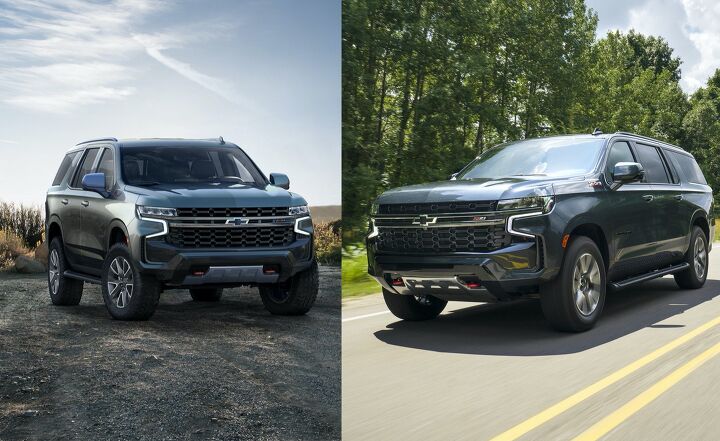
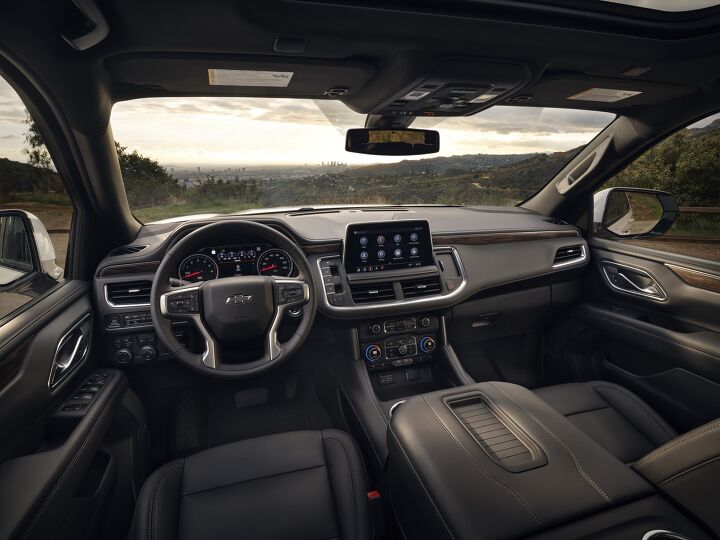
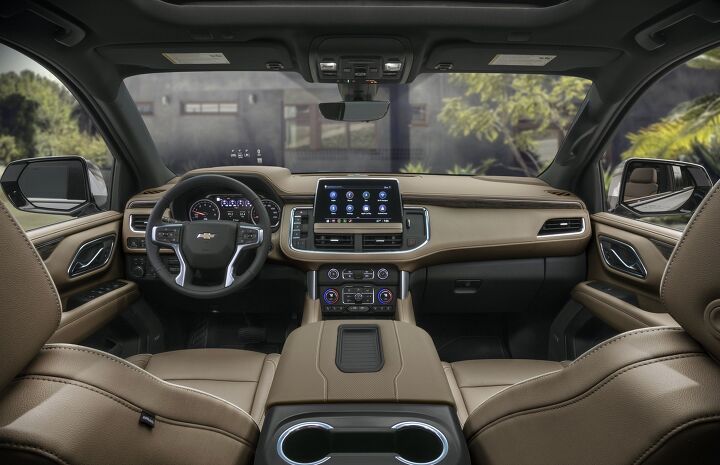






























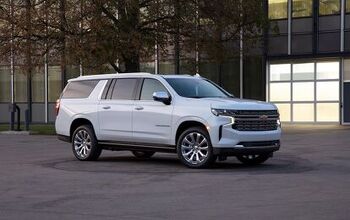
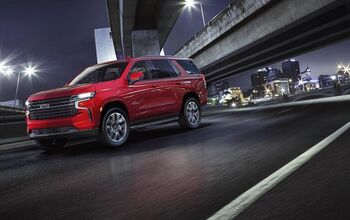


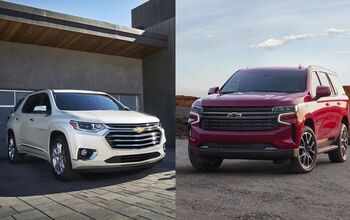


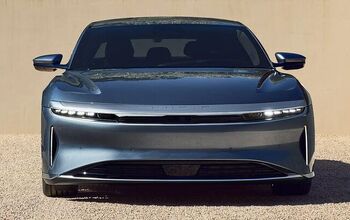
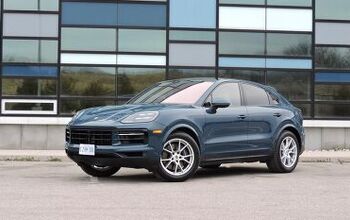


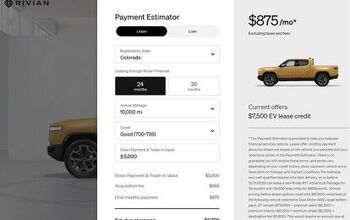



Comments
Join the conversation